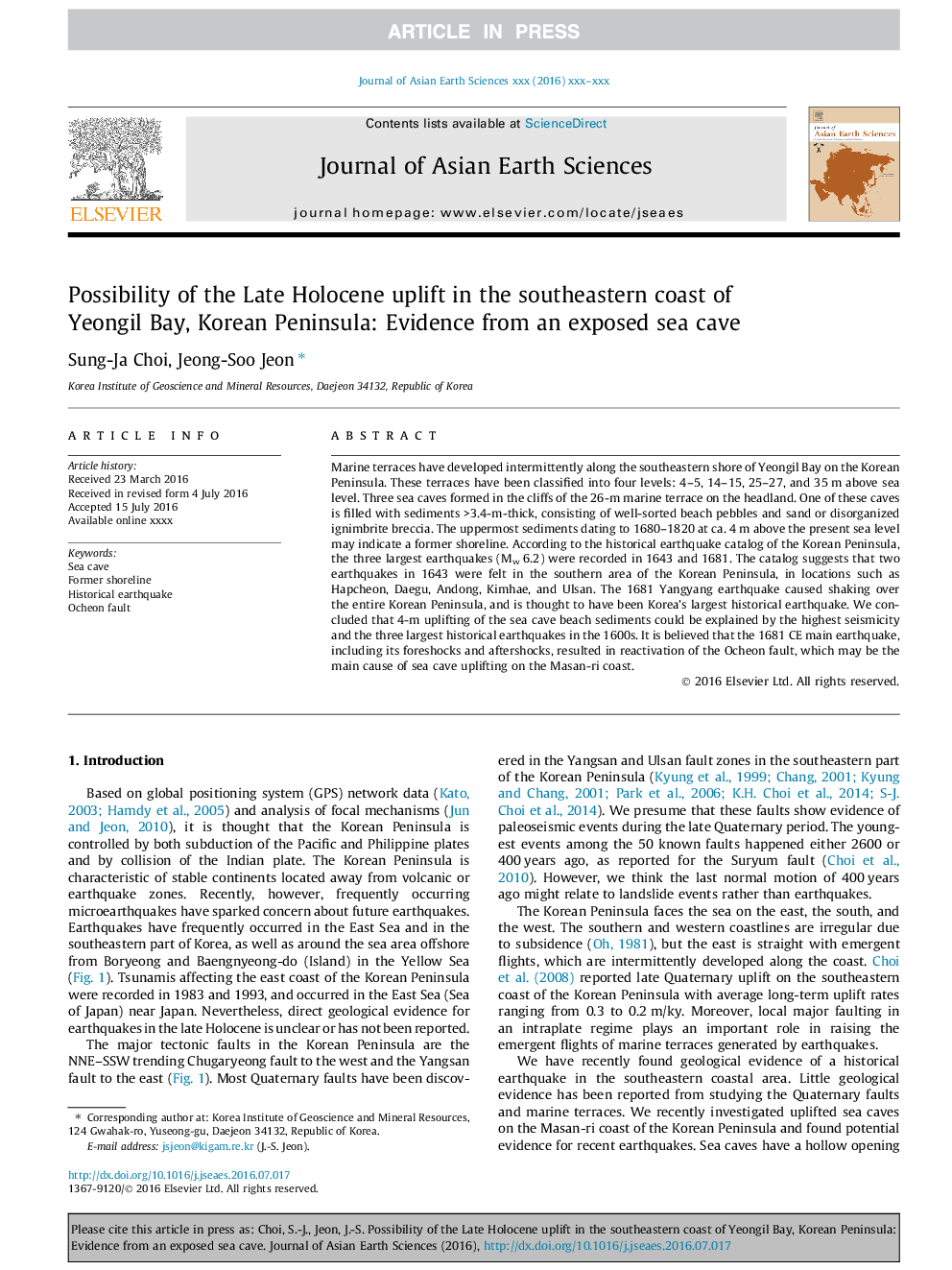| کد مقاله | کد نشریه | سال انتشار | مقاله انگلیسی | نسخه تمام متن |
|---|---|---|---|---|
| 5786225 | 1640341 | 2016 | 9 صفحه PDF | دانلود رایگان |
عنوان انگلیسی مقاله ISI
Possibility of the Late Holocene uplift in the southeastern coast of Yeongil Bay, Korean Peninsula: Evidence from an exposed sea cave
دانلود مقاله + سفارش ترجمه
دانلود مقاله ISI انگلیسی
رایگان برای ایرانیان
کلمات کلیدی
موضوعات مرتبط
مهندسی و علوم پایه
علوم زمین و سیارات
زمین شناسی
پیش نمایش صفحه اول مقاله

چکیده انگلیسی
Marine terraces have developed intermittently along the southeastern shore of Yeongil Bay on the Korean Peninsula. These terraces have been classified into four levels: 4-5, 14-15, 25-27, and 35Â m above sea level. Three sea caves formed in the cliffs of the 26-m marine terrace on the headland. One of these caves is filled with sediments >3.4-m-thick, consisting of well-sorted beach pebbles and sand or disorganized ignimbrite breccia. The uppermost sediments dating to 1680-1820 at ca. 4Â m above the present sea level may indicate a former shoreline. According to the historical earthquake catalog of the Korean Peninsula, the three largest earthquakes (Mw 6.2) were recorded in 1643 and 1681. The catalog suggests that two earthquakes in 1643 were felt in the southern area of the Korean Peninsula, in locations such as Hapcheon, Daegu, Andong, Kimhae, and Ulsan. The 1681 Yangyang earthquake caused shaking over the entire Korean Peninsula, and is thought to have been Korea's largest historical earthquake. We concluded that 4-m uplifting of the sea cave beach sediments could be explained by the highest seismicity and the three largest historical earthquakes in the 1600s. It is believed that the 1681Â CE main earthquake, including its foreshocks and aftershocks, resulted in reactivation of the Ocheon fault, which may be the main cause of sea cave uplifting on the Masan-ri coast.
ناشر
Database: Elsevier - ScienceDirect (ساینس دایرکت)
Journal: Journal of Asian Earth Sciences - Volume 130, 15 November 2016, Pages 256-264
Journal: Journal of Asian Earth Sciences - Volume 130, 15 November 2016, Pages 256-264
نویسندگان
Sung-Ja Choi, Jeong-Soo Jeon,